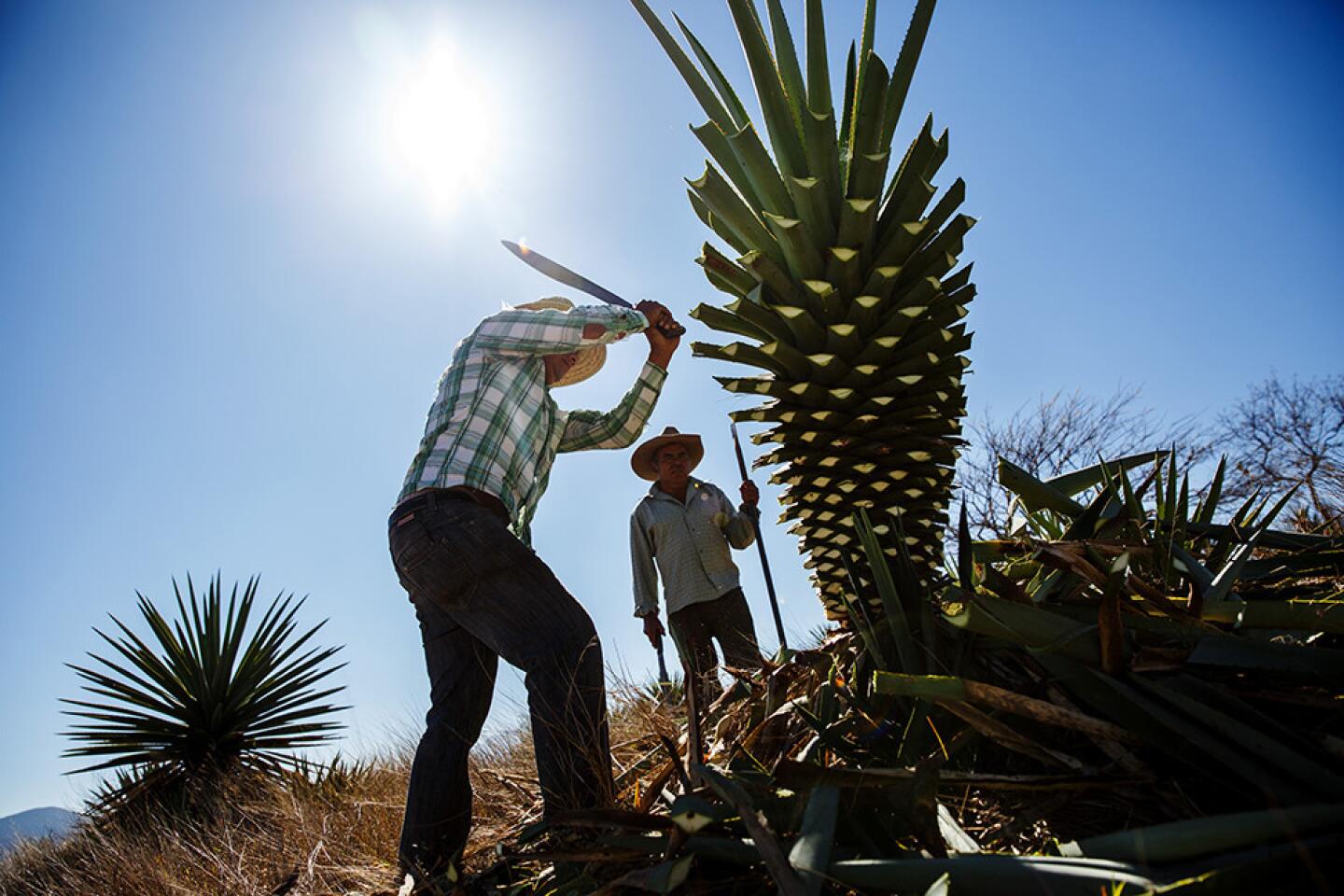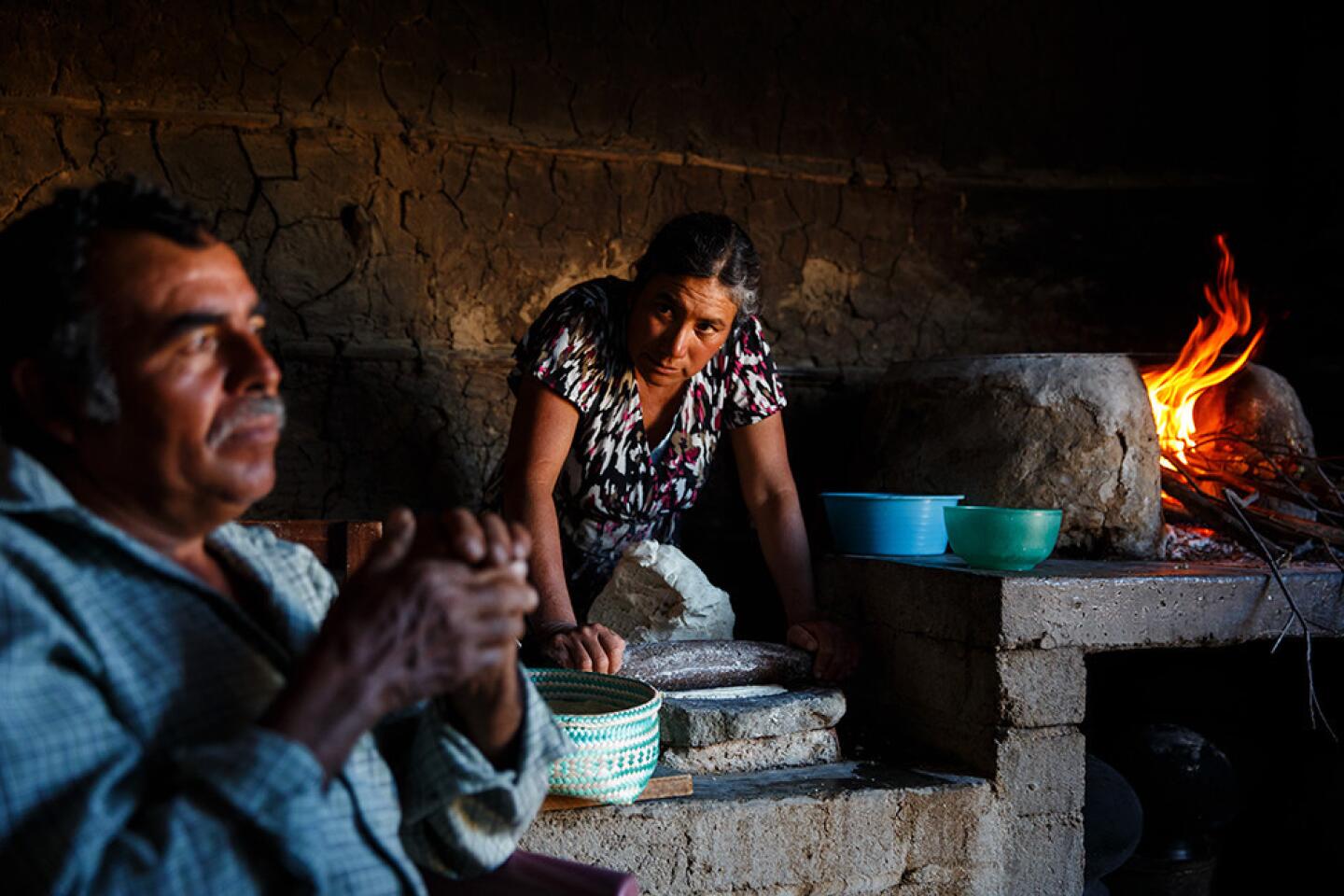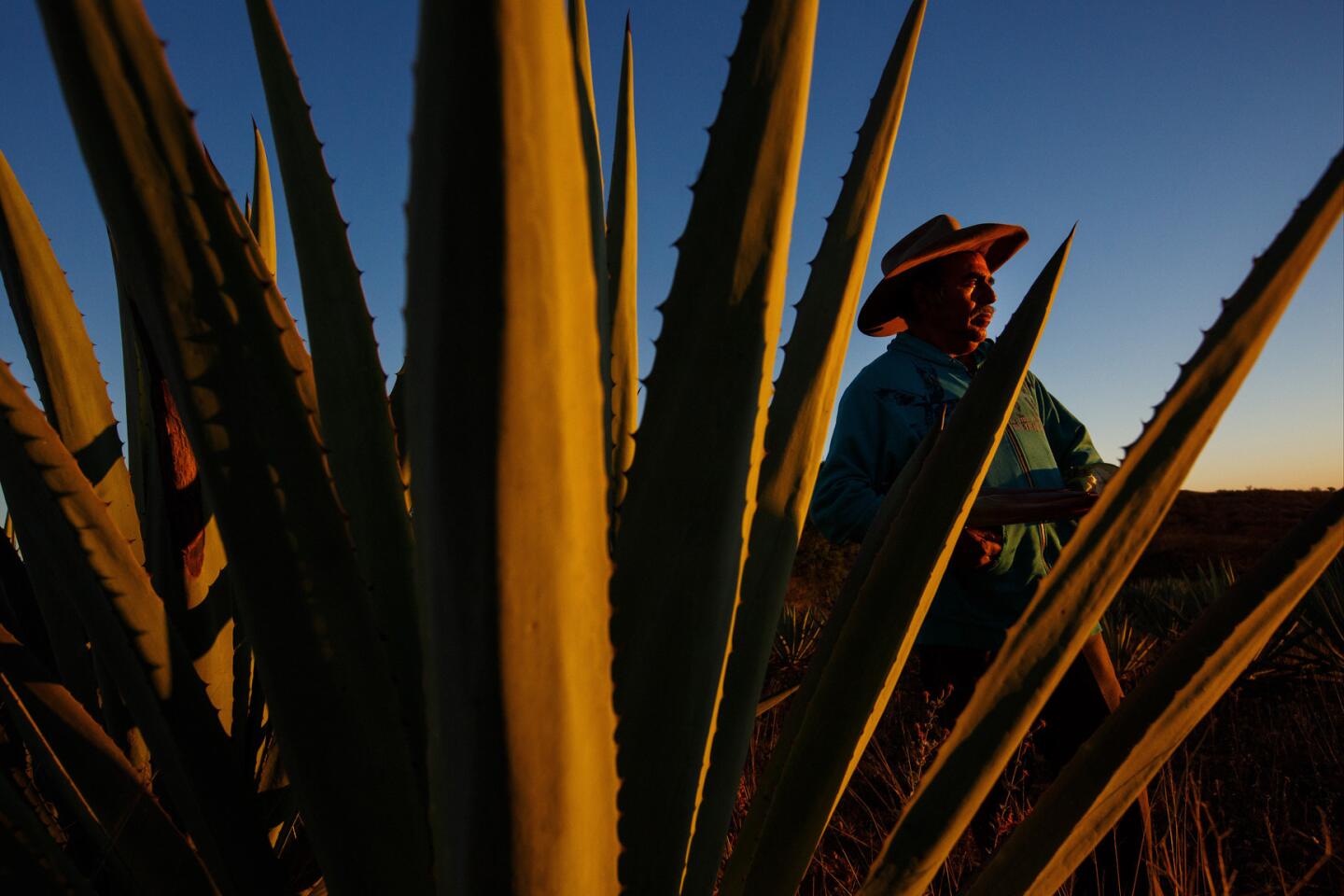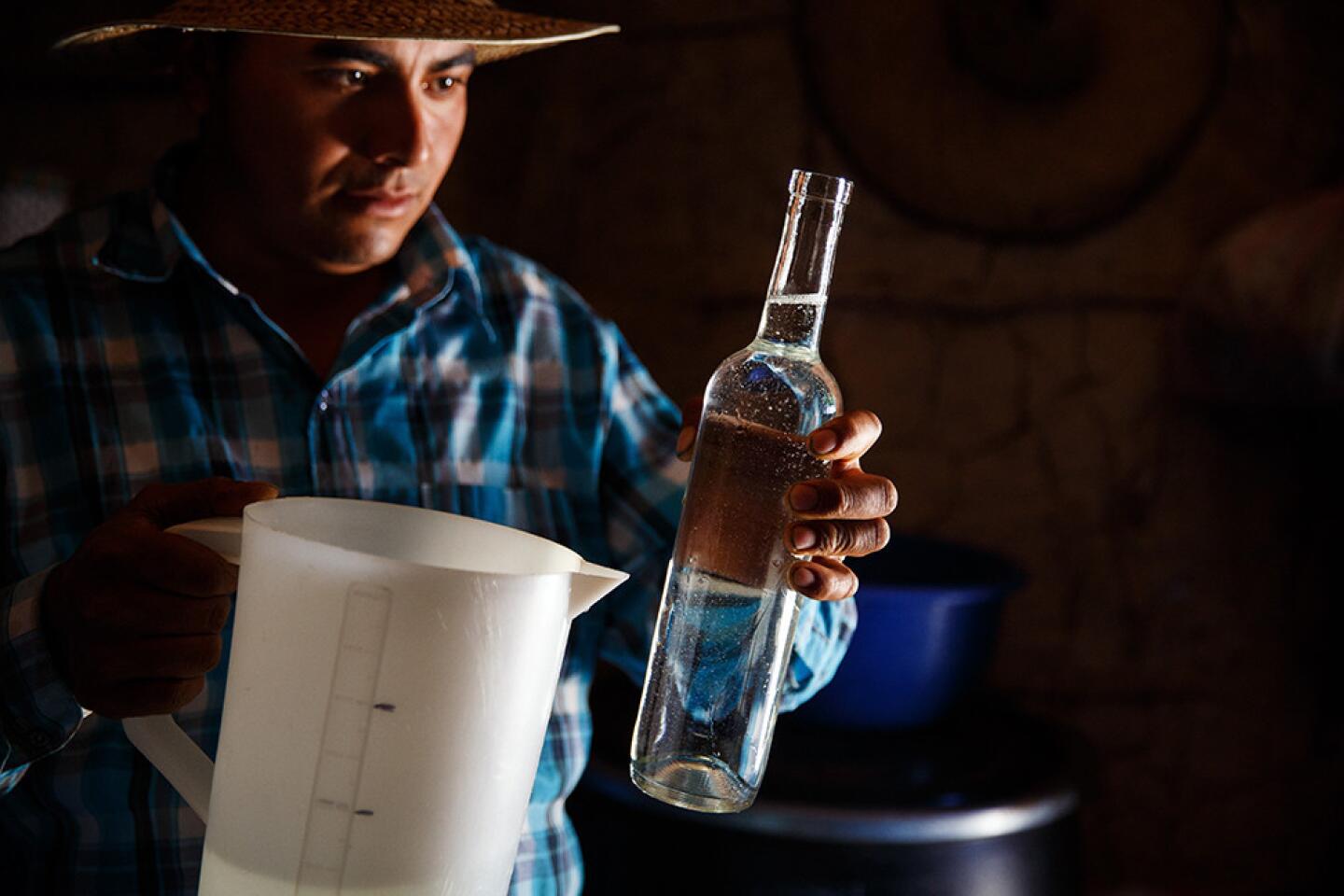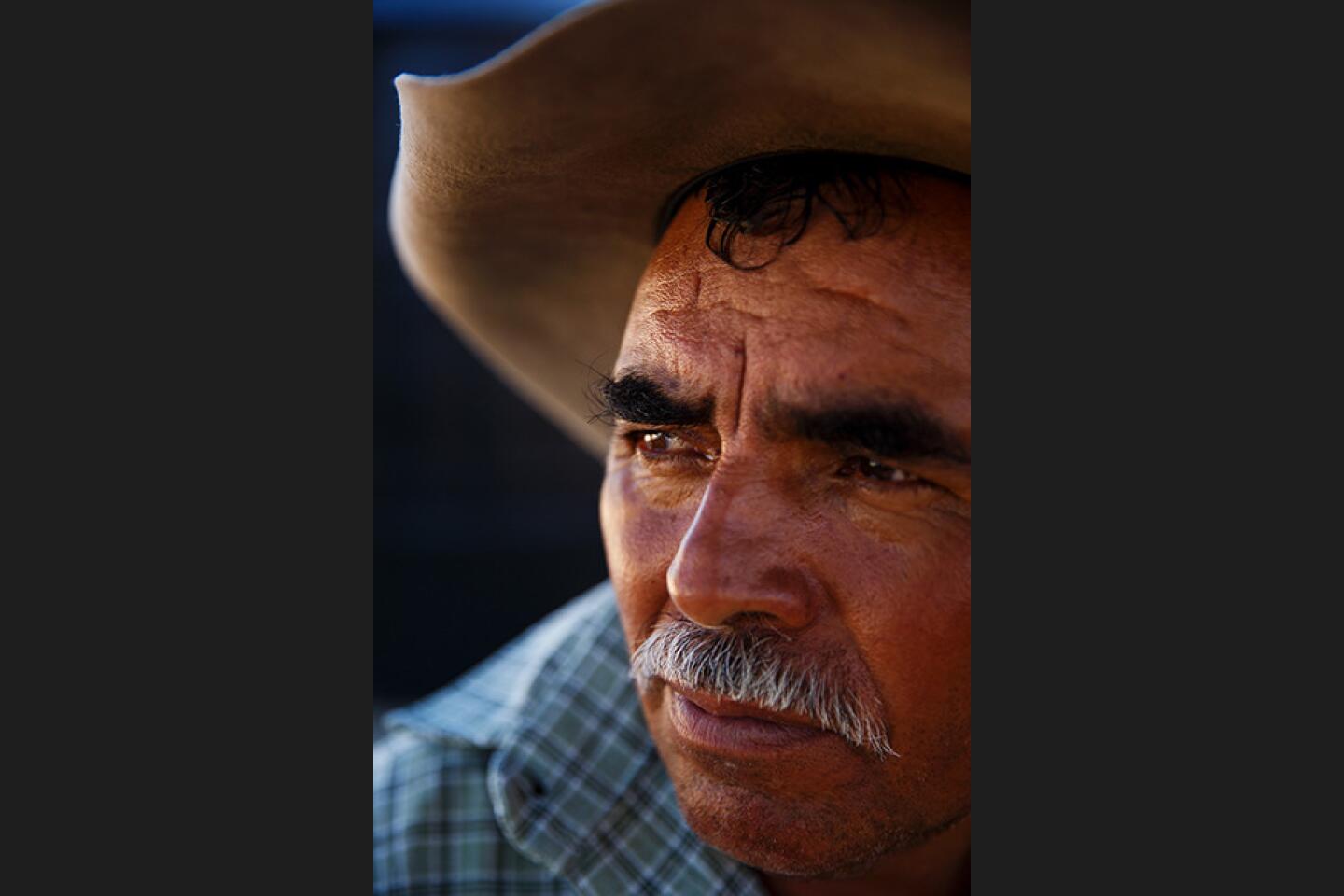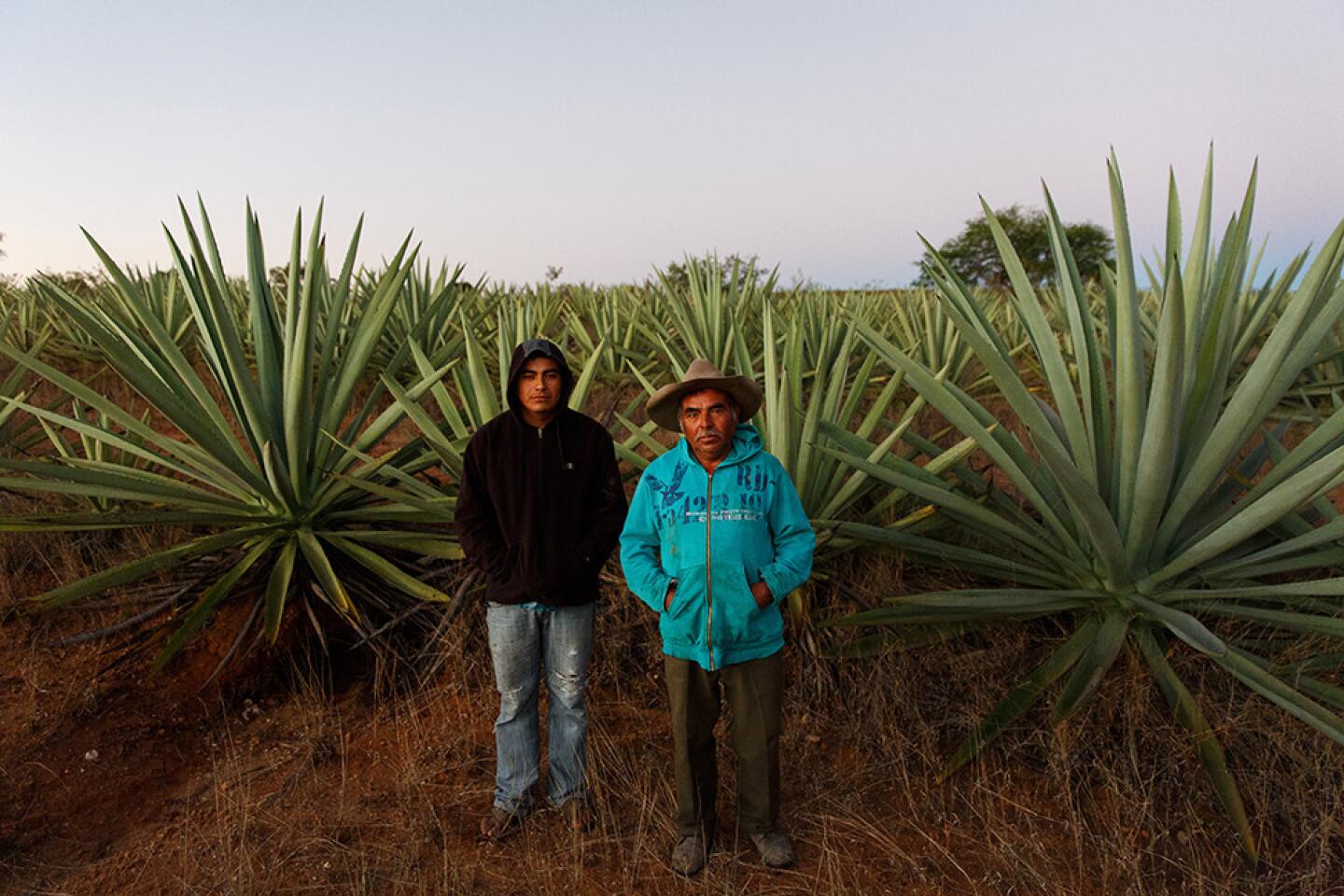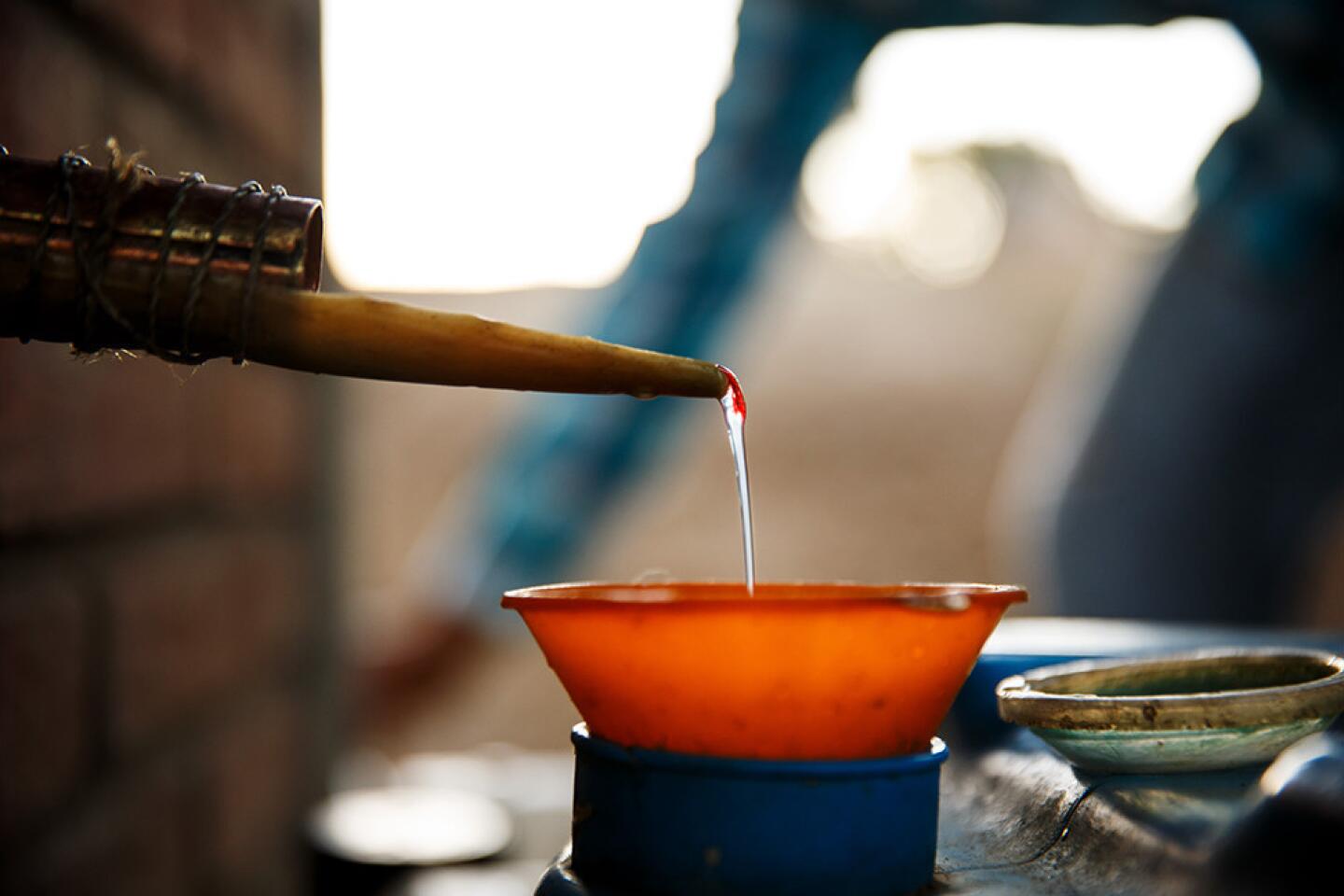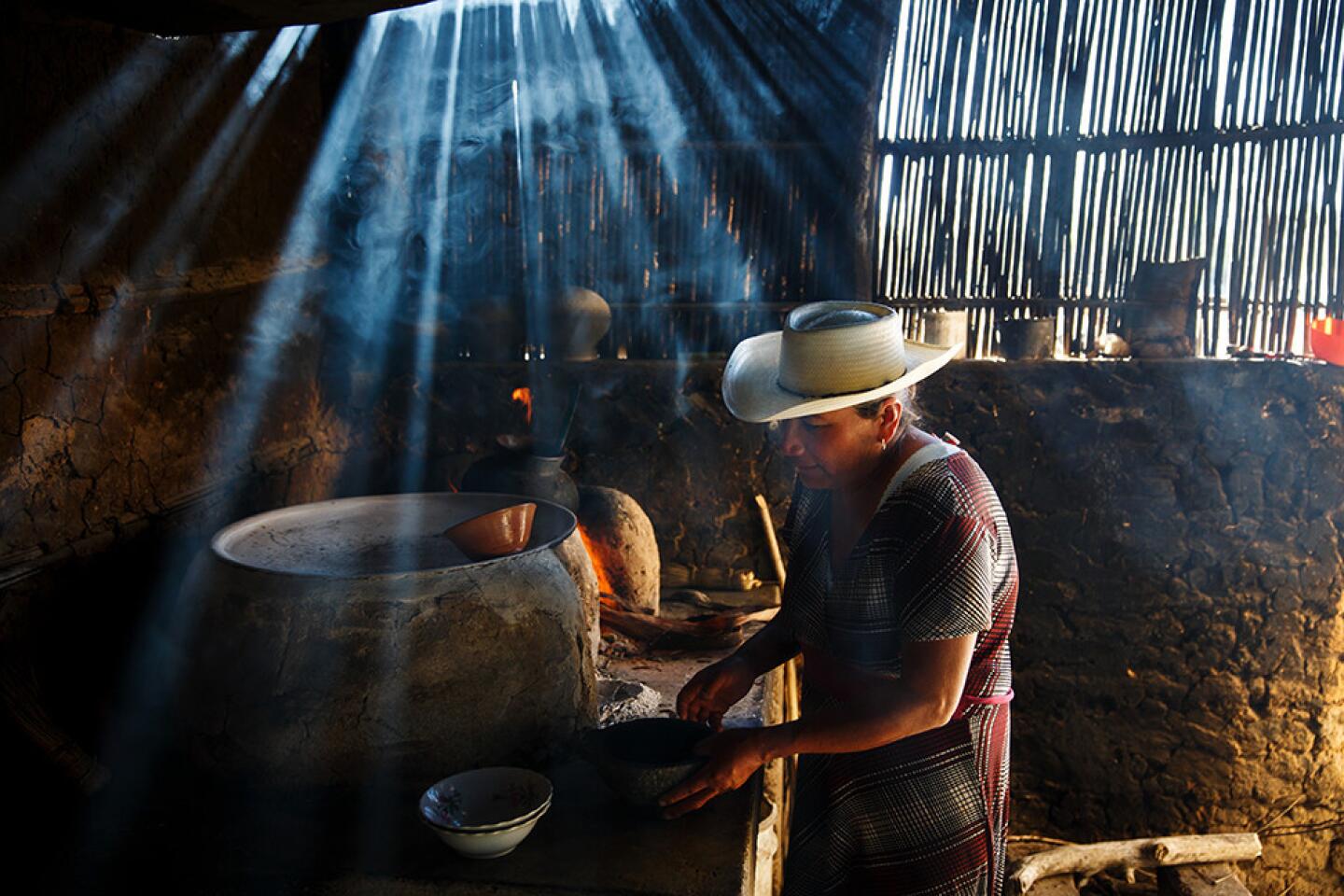Distilling mescal is a father-to-son tradition in Mexico

- Share via
reporting from MIAHUATLAN, Mexico — When it’s time to distill their mescal, Manuel Ramos Sanchez and his father, Victor Ramos Lucas, stay up all night. Then they stay up for the next 11 nights.
Apart from a cat nap and a small break here and there, the second- and third-generation mescal producers stay by their still, carefully stoking the embers beneath, washing and rewashing the components between batches, and hauling fermented maguey to the vessel.
In the last few years, mescal, a centuries-old distillate of agave consumed predominantly by Mexicans, has found an international audience. It’s stirred and shaken by mixologists from New York to San Francisco to Berlin, who prize its complexity, which derives from the traditional methods that artisans like Manuel and Victor still utilize.
The father and son have met some of these enthusiasts, who must trek first to Oaxaca City, in southern Mexico, then drive for two hours to Miahuatlan, passing a prison, then a church, before they turn off onto dirt roads edged with the pale green maguey destined for distillation.
Tequila, far more industrialized than mescal, is made from a single type of maguey, the blue agave. As bourbon is a variety of whiskey, tequila is a variety of mescal, the mother beverage.
Though the value of Victor’s business has boomed, as consumers are willing to pay more, when asked about passing the palenque, or production facility, on to his son, Victor laughs.
“His inheritance,” Victor says, mockingly.
Victor’s own father worked as a day laborer for another mezcalero, then scrimped and saved until he could rent a piece of property, and eventually buy one. Victor, who is 52, left school in fourth grade to help his father. “At that time, it was better to work than go to school,” he says. For mezcaleros, he adds, the palenque is their school.
His 22-year-old son, Manuel, says he owes his own knowledge to his father’s careful eye.
“Sometimes I have a few little questions, and I ask him, and everything comes out perfectly,” he said.
Foreigners are pulled here by the drink itself, of course, but they also come because they wish to witness the creation of mescal, a process far more complex than can be fathomed from thousands of miles away.
Here they learn not only the sticky smell that hangs over production — heavy and sweet, like roasting squash bathed in syrup — but also its sounds, tastes and the variations in method from one family to the next.
As in winemaking, the type of maguey, terrain and fermentation method leave a thumbprint on each batch. Artisans are committed to using many types of maguey, some of which grow wild and can take 25 years to reach maturity. There’s no easy way of catching up to demand — just plant maguey now and wait, wait, wait.
On a berm above the distillation area, a massive hole has been dug out of the earth, and waits, surrounded by rocks, to be used as an oven when the maguey is ready to be cooked.
There’s the task of journeying into the hillsides surrounding the palenque, to search for wild maguey — be it the tobala or tepeztate variety — ready to be harvested and carved down to its piña, the heart that’s revealed when the spines are cut back. Victor and Manuel use a large stone wheel to crush the cooked maguey, a task accomplished with the strength of two bulls. The service of those bulls, who don’t have names, requires its own set of tasks.
Mezcaleros use all manner of vessels for fermentation — barrels, clay pots, even large leather sacks.
At Mezcaloteca, a bar and mescal education center in Oaxaca, you can try so-called pechuga, a type of mescal usually made for celebrations, in which the distiller hangs a raw chicken breast over the batch as it ferments.
Later, a glimpse of this in person revealed a chicken looking not so raw anymore. It had hardened and turned brown, and chipped away from the bone when the distiller gave it a few hard taps. Iguana and octopus are sometimes used in its stead, depending on the region, along with fruit.
To know a good mescal, brush a bit against your skin. When it dries, take a whiff and see whether you detect alcohol or the deep scent of roasted maguey, a bit like a pumpkin pie in the oven at Thanksgiving. If you do, you can trust your drink was not watered down or mixed with inferior product.
When it is agitated, look for pearl-like bubbles that hang around for a few seconds. And then think of Victor, at 4 a.m., holding half a coconut shell out to collect the freshly distilled mescal, then sucking it up through a reed and blowing it back again into the shell to agitate. In this low-tech way, he ensures the bubbles are forming properly and the alcohol content is still up to his standard.
Mescal production has been changed by modern “conveniences,” Victor was quick to point out. As he tended the fire beneath the still, he pointed to the light bulb overhead. The shadows of bats danced on the walls as they dive-bombed mosquitoes.
When he was learning the trade as a boy, there was no electricity to light the long nights, just the orange embers and the moon. Water had to be pulled up from a well, whereas today a large cistern saves a few steps.
Victor says mezcaleros once used woven baskets to transport the slosh of fermented maguey into the still. Liquid leaked through the cracks and, by the time they finished, their clothes were soaked. The plastic buckets he uses today are more precious than they appear. He didn’t always have bulls, just a large stone hammer and the force of his body to crush tons of maguey.
Another change profoundly affects the final product: Victor now elects just a single variety out of two dozen or so types of maguey when he makes a batch, rather than mixing several as he once did, as most producers once did. Foreign consumers want to taste a karwinski or cuixe, types of agave, as they would a Chardonnay or Pinot Grigio.
As Victor walks his bulls around and around, crushing maguey with each pass, he is asked how he met his wife. At a dance, he says. Each December, there are dances in the town, and it was one of the few ways men and women could meet one another.
“Or you’d write a letter,” he says. A young man would spot a woman from far away, and write her parents a letter with a request for marriage. Did the letter contain certain personal information? A description of why he should be considered a worthy husband?
“No,” he says. Just the request. “You looked at the way he worked in the field, if he was a hard worker.” If the answer was yes, the parents responded. If the answer was no, they didn’t. “Now what matters is if you have a car.”
Today, there’s Facebook and text messages. “Before, the women took care of the goats and when her parents weren’t around you’d try to talk to her.”
But one thing that hasn’t changed is the time and care it takes to produce mescal the way Victor’s father taught him. So he and Manuel get by with little sleep until the 12-night process is through. They grind the maguey and tend the fire.
As international attention has increased, many mezcaleros are trying to establish their brand. But father and son don’t have a name for their mescal. Or an email address.
But if you want to find them, drive to Miahuatlan and ask around until you find the right dirt road.
Tillman is a special correspondent.
ALSO
In Brazil’s political fracas, ‘coup’ is a loaded term
Chinese e-commerce giant Alibaba connects rural residents to online shopping
Human Rights Watch accuses Mexico of failing to care for young Central American migrants
More to Read
Sign up for Essential California
The most important California stories and recommendations in your inbox every morning.
You may occasionally receive promotional content from the Los Angeles Times.
